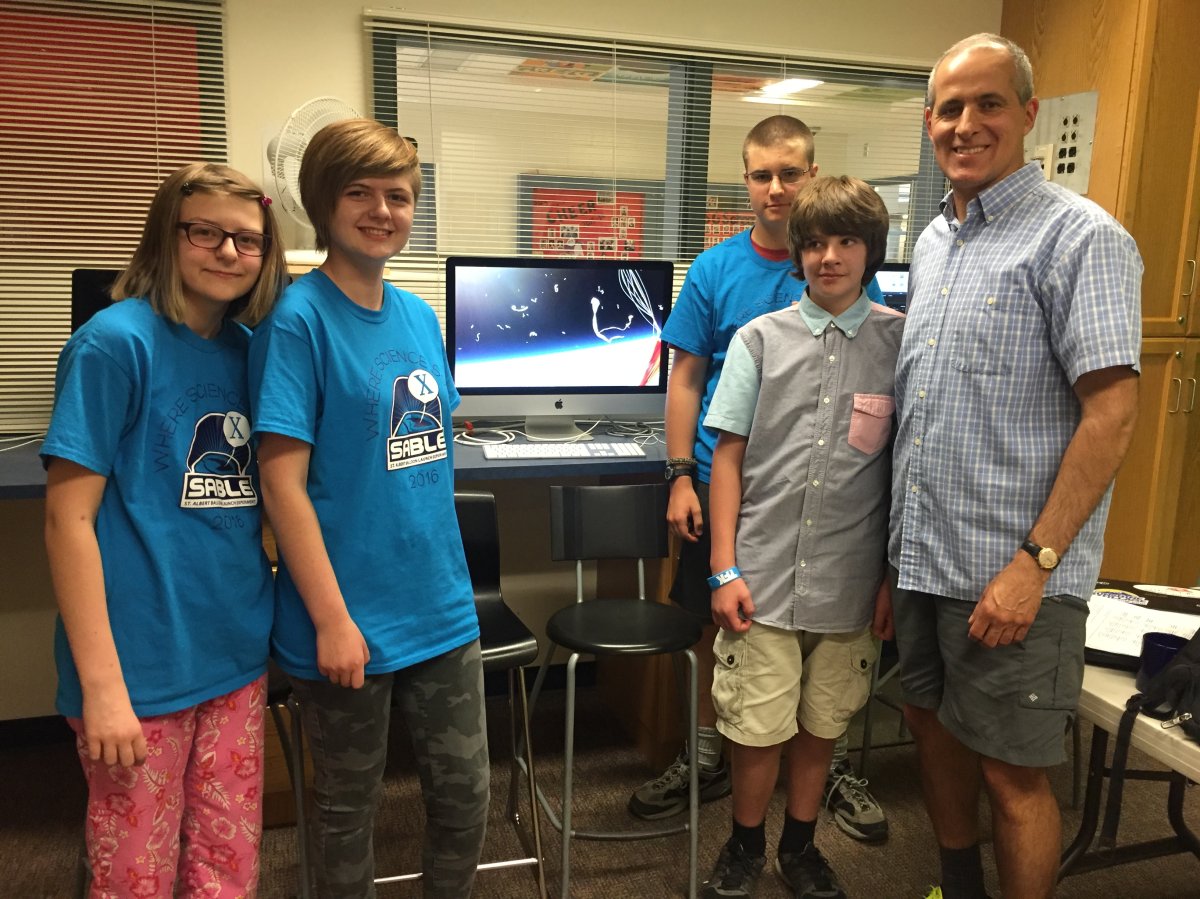Tony Rafaat hasn’t always been good at sending weather balloons to the edge of space.

It was almost a decade ago that the teacher at St. Albert’s Sir George Simpson Junior High School launched his first one as part of an after-school program.
Back then, he still had a few things to learn.
Rafaat named the after-school program the St. Albert Balloon Launch Experiment, or SABLE for short. He and his students launched their tenth SABLE mission last week, a hugely successful sky-high experiment testing the effects of solar radiation on various candies.
“Kids are getting a hands-on science experiment, we’re applying lots of curriculum objectives. And it’s just fun, and it’s interesting,” Rafaat said.
One of Rafaat’s Grade 9 students came up with the experiment idea.
While many of his classmates are setting their sights on summer vacation, Cole’s focus is on the project.
From chemistry to physics to multimedia production and computer coding, the participating students each learned new skills to contribute to the project.
Take Grade 7 student Sam Craig, who learned how to code the sensors on board the SABLE flight to record things like height, speed and GPS location. Craig said the project has helped him discover a passion for computer coding.
“Next year, Mr. Rafaat wants me to teach some of the Grade 7s coming into the program,” he said. “Like what the sensors are doing and how to work them.”
“And I think once I’ve left junior high, I might come back to see how far our coding has gone,” Craig proudly explained.
“Every single mission presents different images, different weather conditions and different reactions,” Rafaat said. Allowing the students to contribute creative and innovative ideas to each project is something “they’re really motivated and excited by.”
“Mr. Rafaat’s enthusiasm is a big inspiration to do well in the sciences and go further than where normally people would go,” student Lydia Bouhay said.
Bouhay and her younger sister Isabel, fully understand that these aren’t the same kind of experiments their parents did as kids.
“This is really important for our education because it’s hands on – it lets us see what we can do with the things that we learned in class and how we can apply it to real-life scenarios,” the older of the two said.
“Even when I head into high school, I’m probably going to come back just to see the launches,” the younger sister said with excitement.
“It’s going to be really interesting to see how SABLE is going to change over the years,” Isabel said, adding it’s something she plans to observe when she joins the club again for Grade 8.




Comments